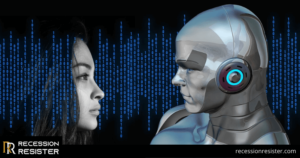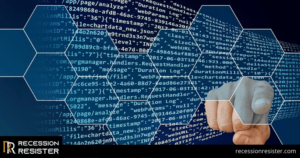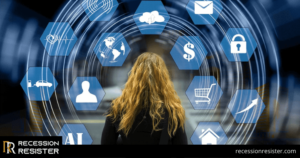Implementing artificial intelligence is extremely intricate and requires continual supervision to guarantee it is functioning as anticipated and operating at its peak performance.
Healthcare provider organizations should ensure that they are maximizing the benefits of using AI technologies. Essentially, they need to tailor the AI so that the tools are suitable for the demands of their businesses.
We interviewed six specialists in AI with plenty of knowledge regarding implementations of healthcare who supplied detailed suggestions on how IT directors and other medical IT experts can perfect their AI mechanisms and methods to serve their clinical centers in the most efficient manner.
Qualities of Artificial Intelligence:

Although there is no universal consensus on what AI entails, it is generally accepted to mean machines that react to external stimuli in the same way as a human would due to our ability to deliberate, come to decisions, and act with purpose. AI driven software systems can help people by making decisions that would typically require a person’s expertise, as well as predict potential problems before they occur and address them as soon as possible. Hence, they act in a purposeful, wise, and adjustable way.
1. Intentionality
AI algorithms are created to come to conclusions, typically utilizing real-time information. They are not similar to machines that are only capable of automated or predetermined reactions. They combine information from a variety of places like sensors, digital data, or remote inputs, analyze it quickly, and act on the conclusions gained from the data.
Significant strides have been taken in terms of developing storage systems, increasing processing speeds, and honing analytical methods, resulting in a highly advanced capability for analysis and decision-making.
AI is already starting to transform the world, raising significant issues for our society, the economy, and governments.
2. Intelligence
AI usually goes hand in hand with machine learning and data analysis. Machine learning takes data and looks for underlying trends. Software designers can use knowledge picked up by the program if it is useful for tackling any practical issues. This knowledge can then be used to analyze particular problems.
It is necessary to have data that is strong enough so that algorithms can detect valuable patterns. Information can be in the shape of digital records, satellite images, visual imagery, textual content, or unorganized data.
3. Adaptability
AI systems possess the capacity to grow and adjust in the process of forming judgments. In the realm of transportation, for instance, semi-autonomous vehicles have technological applications that alert drivers and cars to any impending traffic delays, such as congestion, roadwork, potholes, and other possible obstructions.
Cars can use the knowledge gained from other cars on the street, all without any human interaction, and all the accumulated knowledge from those other cars is instantly and completely able to be used by other vehicles that are set up similarly.
Their algorithms, sensors, and cameras that take current operations into consideration, along with dashboards and visuals, make it possible to present info in the present moment, giving human drivers the ability to comprehend the current road and vehicular conditions.
In the instance of driverless vehicles, advanced technologies can oversee the automotive completely and make all of the navigation choices.
4. Applications in Diverse Sectors
AI is available now, and it’s being used and implemented in a number of different industries. It’s not an idea that’s still far off in the future. Areas of study including finance, national defense, healthcare, law enforcement, transportation, and cleverly designed cities are all comprised in this. AI has already had a profound effect on the world, providing humans with increased capabilities.
AI has become more and more important as it presents countless potentials for economic growth. According to a study conducted by PriceWaterhouseCoopers, the implementation of Artificial Intelligence on a global scale could raise the total global Gross Domestic Product (GDP) percentage by 14% by the year 2030; a financial increase of $15.7 trillion.
In more specific terms, the technological implementation is projected to add an estimated $7 trillion in China, $3.7 trillion to North America, $1.8 trillion in Northern Europe, $1.2 trillion for Africa and Oceania, $0.9 trillion for the rest of Asia excluding China, $0.7 trillion within Southern Europe, and 0.5 trillion in Latin America.
China has established a purpose of devoting $150 billion to AI and becoming the world’s foremost expert in the field by 2030, making considerable advances in the course of doing so.
A research project conducted by the McKinsey Global Institute with regards to China found that the nation has the potential to see an increase in its GDP growth of between 0.8 and 1.4 percent annually should they commit to deploying AI-led automation.
Although China presently trails the United States and the United Kingdom in this area, the considerable size of its AI market gives them the possibility to engage in pilot testing and other long-term advancement.
5. Finance
The amount of money put into financial AI in the US tripled between 2013 and 2014, reaching a total of $12.2 billion. According to observers in that sector, “Decisions about loans are now being made by software that can take into account a variety of finely parsed data about a borrower, rather than just a credit score and a background check.”
In addition, there are so-called robo-advisers that “create personalized investment portfolios, obviating the need for stockbrokers and financial advisers.” These advances are designed to take the emotion out of investing and undertake decisions based on analytical considerations, and make these choices in a matter of minutes.
An instance of this that is quite noticeable is occurring in stock markets, where automated high-frequency trading has taken the place of a great deal of human judgment.
Individuals are able to present both purchase and sale requests and computers are capable of pairing them up in a split second, not requiring any human interaction.
Machines are able to detect and take advantage of discrepancies in trading or pricing on a very small level, and carry out trades that will make a profit as per the commands of the investor.
In certain locations, these tools have a significantly enhanced capacity for saving data due to running on highly developed computing technology and not relying just on binary values of either 0 or 1, but instead employing “quantum bits” that may store various values in each area. That dramatically increases storage capacity and decreases processing times.
AI is beneficial in identifying deceptive activity within financial systems as part of fraud detection. It can be hard to notice deceitful actions in big companies, but AI can spot irregularities, anomalies, or behaviors that may warrant extra research. This assists supervisors in discovering dilemmas quickly in the process, prior to them increasing to hazardous degrees.
6. Health Care
AI technology is aiding designers to boost computational complexity in the field of healthcare. As an illustration, Merantix is a German organization that uses deep learning to tackle medical problems. This technology has a medical-imaging component that recognizes lymph nodes in humans through CT scans.
What distinguishes it is the ability to label the nodes and detect any minor issues like lesions or abnormalities that may be a cause for concern. Humans have the capability of completing this task, however, radiologists who do this type of work will charge around $100 an hour and may only be able to thoroughly evaluate four pictures an hour. If 10,000 pictures were looked at, it would cost $250,000 which would be too expensive if done by hand.
Deep learning can be used to train computers on data sets to be able to distinguish a normal versus an anomalous lymph node. Through imaging exercises and refining the labeling, radiological imaging experts can use this understanding when treating genuine patients, to figure out how vulnerable someone is to having cancerous lymph nodes.
It is a question of distinguishing between those who are unwell and those who are healthy, as only a small number are anticipated to have a positive test result.
Artificial Intelligence is also utilized when dealing with congestive heart failure, a sickness that affects 1 in 10 elderly people and fees the United States $35 billion yearly.
AI tools prove to be beneficial because they can anticipate and prepare for any difficulties that may arise in the future, allowing for resources to be allocated to patient education, monitoring, and preventative measures that help keep people out of the hospital.
Applying AI To The Right Problem
Joe Petro, the Chief Technology Officer from Nuance Communications, a supplier of Artificial Intelligence (AI) tech for medical imaging interpretations, articulated that enhancing AI is based on knowing what AI is able to do and locating the right issue to use it for.
He mentioned that a lot of exaggerations were being spread about and unfortunately, these were mostly absurd. In order to get the most out of AI, it is essential that we recognize: the difficulty in question that needs to be resolved; how AI can assist in resolving this difficulty; could AI be included to an existing capability; and, on occasions when AI won’t be beneficial.
For example, is “traceability” important? AI is known to have an issue with the “black box limitation,” meaning that it can be difficult to determine all of the data that led to the conclusions made by a neural network.
According to Petro, it can be practically impossible to understand the route that was taken to reach the outcome of a neural network. Thus, if having the ability to trace back an action is essential for the outcome, it might be necessary to revert to a more standard computational approach, which is not necessarily a negative approach.
Is The Problem Conditioned For AI?
Also, is the problem well-behaved and well-conditioned for AI? He declared that, for instance, there are explicit forms in the solution to the complication which come back again, do not differ a lot, and are practically inevitable.
He posed the question: would a series of experts all come up with the same solution to the problem? If a situation arises where humans receive the same information and have diverging answers, then AI is likely to struggle to make sense of the data, and the neural networks may output results that clash with some experts’ decisions. Be confident that AI will uncover a pattern – the inquiry is whether the pattern can be replicated and stable.
According to Petro, a lot of the difficulties that artificial intelligence is able to solve currently tend to have narrowly set constraints, which helps make the results more reliable and useful, particularly in the field of healthcare. He emphasized the importance of picking the correct issue to address and specifying the range of that issue for the best results.
Additionally, there must be ample amounts of training data accessible in order to form trustworthy AI models and have them provide dependable outcomes. Sadly, sometimes the necessary data cannot be found in the format which is necessary to teach the artificial intelligence networks.
When a radiologist examines an image, they may not precisely point out the area where the diagnosis was determined. No data markup makes training sometimes impossible. A CDI specialist or care coordinator typically will not include every bit of information that prompted them to seek clarification from a physician when they review an entire case.
Again, no data markup makes training sometimes impossible. Hence, someone should review the data once again and potentially incorporate the markup and remarks to prepare the preliminary models.
Markup is not a must, however, we must be aware of the fact that the information we want isn’t always readily accessible and may need to be compiled at great expense. Data is basically becoming the modern day software. Without the correct data, AI will be unable to generate the desired consequences.
Pick the Right Applications
Ken Kleinberg, the head of creative innovations at the Point-of-Care Partners consulting firm, voiced his concern that AI is often overhyped, suggesting it can be used to tackle any and all decision-making issues.
He described how many applications that were formerly tackled with trusted methods such as rules-based or statistical processes are now frequently being seen as appropriate for AI solutions.
Taking into account all the extra elements necessary for AI, such as choosing the right model, instruction, assessment, and specialist knowledge, this may be too complex.
Aside from worrying about the return on investment, employing AI may expose organizations to unique complications as well as risks that are more uncommon with more traditional or alternative solutions.
He noted that even elementary machine learning techniques, which may only involve trying out a range of statistical models, require a certain level of proficiency in order to be effective.
Kleinberg recommended to take into consideration many aspects while choosing the programs for AI, such as how many variables are part of it, how difficult and dependant it is, the variability of data, historical knowledge, whether there are content experts at the disposal, the transparency of decision requirements, potential liability issues and the likelihood of needing to retrain and test the system repeatedly.
The knowledge and expertise of the persons creating the model and the resources allocated to the AI platform should be taken into account, but AI should not be seen as something overly expensive to be used for mundane tasks.
An illustration of this would be that only a few identified factors are essential for choosing if a treatment for an individual dealing with a particular issue should be applied – if the patient has those specific signals, then they must be admitted.
He posed the question, “What is the point of striving to teach a computer program information that is already known?” If the objective is to uncover obscure nuances or associations, or tackle uncommon conditions, Artificial Intelligence could be employed with a larger set of variables.
Most organizations are better off using simple, rule-based models when making decisions since they can check and adjust these decisions as new information is gained.
This is especially true when the amount of rules is within the hundreds. That may be a more advantageous beginning than heading right to an AI framework.
Get Widespread Input on Optimization

In order to fully reap the benefits of an AI investment and customize the technology to meet the needs of a specific healthcare provider, individuals from all areas of the organization should be involved – not only the IT team or clinical leadership, according to Sanjeev Kumar, vice president of artificial intelligence and data engineering at HMS (Healthcare Management Systems).
He emphasized the significance of dedicating time to gain a comprehensive and in-depth cognizance of the process from booking an appointment for the patient, to check in, the medical procedure, till the completion and the billing.
Including staff in the beginning stages may necessitate extra resources, but will produce a result that can be applied broadly in the company.


